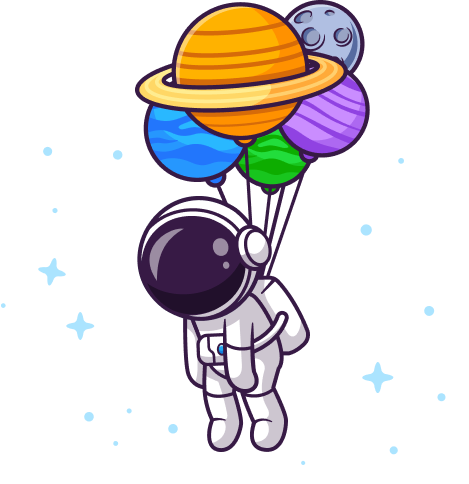Setting the Relation
Ok, but how do we actually set the relation? How do we say:
This
StarshipPartbelongs to thisStarship?
So far, we've been working in AppFixtures with Foundry. We'll come back to Foundry in a bit, but let's go old school for a minute to see how this all works.
Start with new Starship()... then I'll paste in some code to set the required properties. Then add $manager->persist($starship):
| // ... lines 1 - 4 | |
| use App\Entity\Starship; | |
| // ... lines 6 - 12 | |
| class AppFixtures extends Fixture | |
| { | |
| public function load(ObjectManager $manager): void | |
| { | |
| StarshipFactory::createOne([ | |
| // ... lines 18 - 22 | |
| ]); | |
| $starship = new Starship(); | |
| $starship->setName('USS Taco Tuesday'); | |
| $starship->setClass('Tex-Mex'); | |
| $starship->checkIn(); | |
| $starship->setCaptain('James T. Nacho'); | |
| $manager->persist($starship); | |
| // ... lines 31 - 55 | |
| } | |
| } |
Next create a new StarshipPart and just like before, I'll paste code to fill in the properties. Then make sure this saves with $manager->persist($part), and finally, $manager->flush():
| // ... lines 1 - 4 | |
| use App\Entity\Starship; | |
| use App\Entity\StarshipPart; | |
| // ... lines 7 - 12 | |
| class AppFixtures extends Fixture | |
| { | |
| public function load(ObjectManager $manager): void | |
| { | |
| // ... lines 17 - 24 | |
| $starship = new Starship(); | |
| $starship->setName('USS Taco Tuesday'); | |
| $starship->setClass('Tex-Mex'); | |
| $starship->checkIn(); | |
| $starship->setCaptain('James T. Nacho'); | |
| $manager->persist($starship); | |
| $part = new StarshipPart(); | |
| $part->setName('spoiler'); | |
| $part->setNotes('There\'s no air drag in space, but it looks cool.'); | |
| $part->setPrice(500); | |
| $manager->persist($part); | |
| $manager->flush(); | |
| // ... lines 38 - 55 | |
| } | |
| } |
Foundry usually calls persist() and flush() for us. But since we're in manual mode, we need to do it ourselves.
We have a Starship and a StarshipPart, but they're not related yet. Pff, try to load the fixtures anyway. Head over to your terminal and run:
symfony console doctrine:fixtures:load
Rutro:
starship_idcannot be null on thestarship_parttable.
Why is that column required? In StarshipPart, the starship property has a ManyToOne and a JoinColumn() attribute:
| // ... lines 1 - 10 | |
| class StarshipPart | |
| { | |
| // ... lines 13 - 28 | |
| #[ORM\ManyToOne(inversedBy: 'parts')] | |
| #[ORM\JoinColumn(nullable: false)] | |
| private ?Starship $starship = null; | |
| // ... lines 32 - 84 | |
| } |
This lets us control the foreign key column: nullable: false means that every StarshipPart must belong to a Starship.
Assigning the Part to the Starship
So how do we say that this part belongs to this Starship? The answer is beautifully simple. Anywhere before flush(), say $part->setStarship($starship):
| // ... lines 1 - 12 | |
| class AppFixtures extends Fixture | |
| { | |
| public function load(ObjectManager $manager): void | |
| { | |
| // ... lines 17 - 36 | |
| $part->setStarship($starship); | |
| $manager->flush(); | |
| // ... lines 39 - 56 | |
| } | |
| } |
That's it. With Doctrine, we're not setting some starship_id property or even passing an ID, like $starship->getId(). Nope! We set objects. Doctrine handles the boring details of inserting this: first saving the Starship, then using its new id to set the starship_id column on the starship_part table.
Smart!
Try the fixtures again:
symfony console doctrine:fixtures:load
Error-free! Check things out:
symfony console doctrine:query:sql 'SELECT * FROM starship_part'
Et voila! There's our single part, happily linked to starship_id 75. Look that up:
symfony console doctrine:query:sql 'SELECT * FROM starship WHERE id = 75'
There it is: Starship id 75 has a StarshipPart id 1. We're awesome!
Doctrine: work with Objects, Not IDs
Here's the takeaway: with Doctrine relations, you're in the world of objects. Forget about IDs. Doctrine takes care of that part for you. You set the object, and Doctrine does the rest.
But ugh, this is a lot of work in AppFixtures to create a single Starship and a single StarshipPart. So next, let's bring Foundry back to create a fleet of ships and a pile of parts and link them all in one fell swoop. This is where Foundry really shines.

Hi, in Windows 10 and docker engine $part->setStarship($starship); not work.
Error
An exception occurred while executing a query: SQLSTATE[42703]: Undefined column: 7 ERROR: column "starship_id" of
relation "starship_part" does not exist
LINE 1: ...part (name, price, notes, created_at, updated_at, starship_i...
The first line in StarshipPart table does not exist